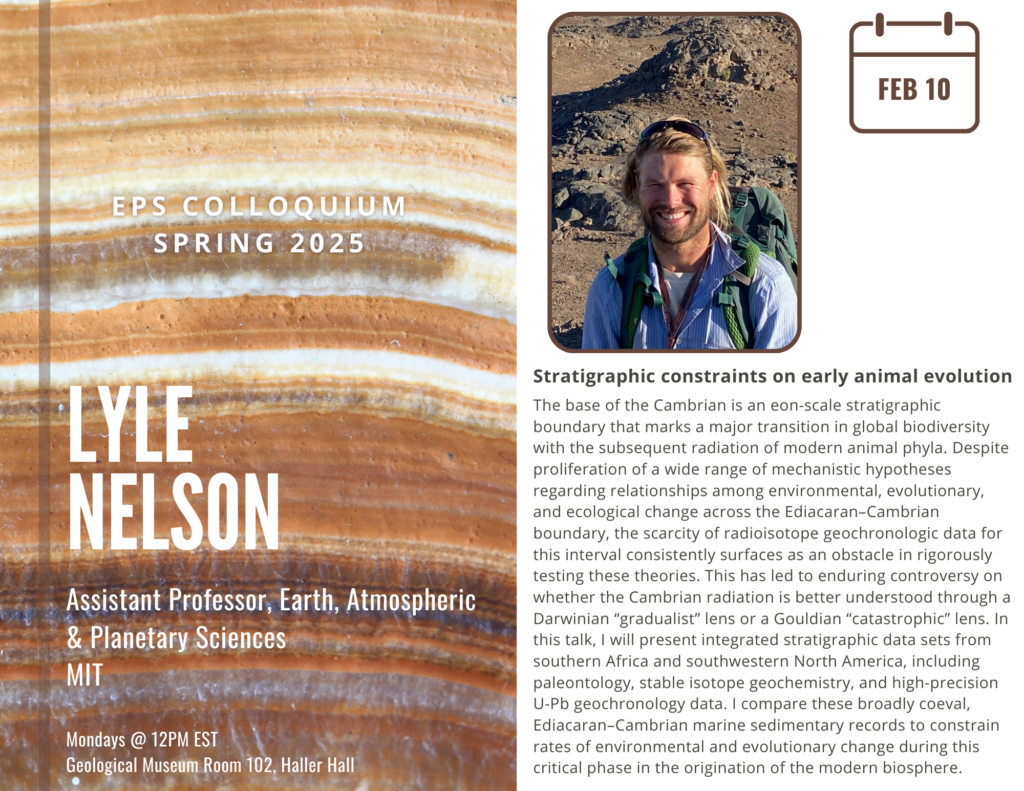EPS Colloquium – Lyle Nelson, MIT
Stratigraphic constraints on early animal evolution
The base of the Cambrian is an eon-scale stratigraphic boundary that marks a major transition in global biodiversity with the subsequent radiation of modern animal phyla. Despite proliferation of a wide range of mechanistic hypotheses regarding relationships among environmental, evolutionary, and ecological change across the Ediacaran–Cambrian boundary, the scarcity of radioisotope geochronologic data for this interval consistently surfaces as an obstacle in rigorously testing these theories. This has led to enduring controversy on whether the Cambrian radiation is better understood through a Darwinian “gradualist” lens or a Gouldian “catastrophic” lens. In this talk, I will present integrated stratigraphic data sets from southern Africa and southwestern North America, including paleontology, stable isotope geochemistry, and high-precision U-Pb geochronology data. I compare these broadly coeval, Ediacaran–Cambrian marine sedimentary records to constrain rates of environmental and evolutionary change during this critical phase in the origination of the modern biosphere.
To be added to the EPS colloquium mailing list, please contact Caroline Carr at carolinecarr@fas.harvard.edu

Dr. Lyle Nelson is a sedimentary geologist whose research focuses on constraining the co-evolution of life and surface environments across pivotal transitions in Earth history with emphasis on the Proterozoic to early Cambrian. He received his BA from the Harvard EPS Department where he started research in Ann Pearson’s lab and then worked in Francis Macdonald’s lab. After graduating, he received Harvard Booth and National Geographic fellowships for a year of independent field research on the Precambrian geology of Death Valley and spent two years working in zinc exploration in Alaska. He then went to Johns Hopkins University for his PhD, where he studied integrated stratigraphy of the Ediacaran-Cambrian boundary and Cryogenian glaciations with EPS alumna Emmy Smith. He spent two years at Carleton University in Ottawa, before joining the MIT EAPS Department as an assistant professor in July.

